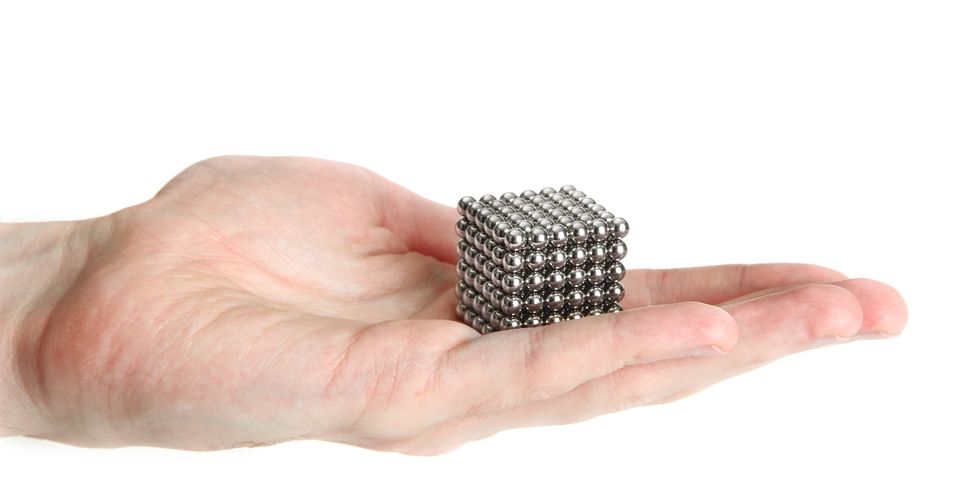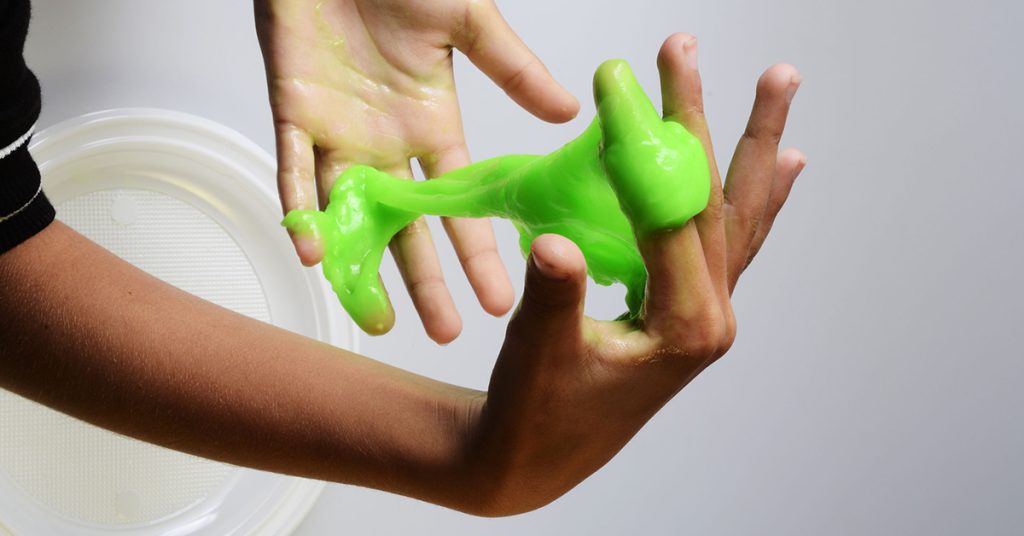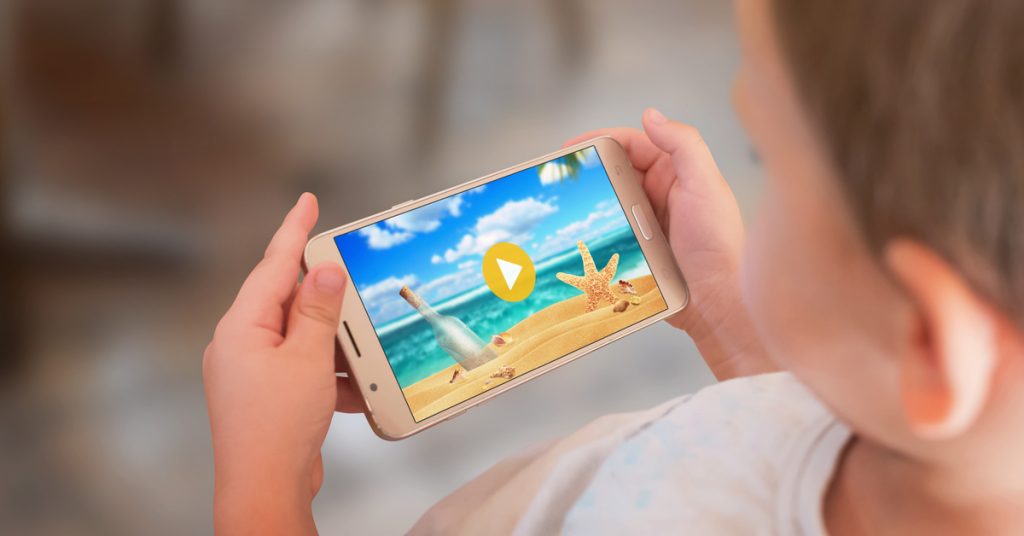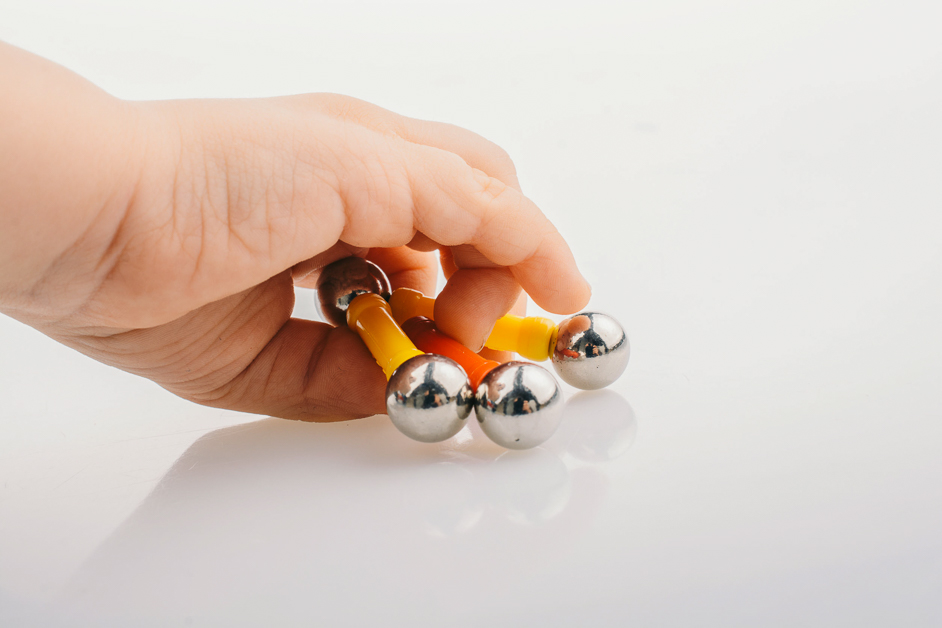Posts Tagged ‘Project KidSafe toy safety 2019’
Voluntary Safety Standard Unlikely to Prevent Children’s Magnet Injuries, Advocates Warn
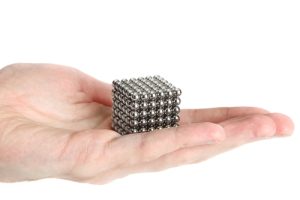
There is a disturbing new report out about children ingesting rare-earth magnet sets at an accelerated rate since 2016, when the industry overturned a federal sales ban in court. The magnet industry now markets these powerful cluster sets to adults, but children continue to swallow them. Parents can take precautions by double checking holiday gifts and discarding any of these products.
The Consumer Product Safety Commission (CPSC) issued a rule banning the small rare-earth magnet sets in 2014 after hundreds of children reportedly ingested the magnets. The rare-earth magnets were (and still are) about 10 times as strong as other magnets. The CPSC’s ban required magnetic parts to have a lower force of attraction of 50 kG² mm² or less.
According to The Washington Post, child ingestions had dropped after the ban was implemented. Injuries dramatically rose between 2017 and 2019, with an estimated 1,580 ingestions this year.
Magnet makers are now working to establish a voluntary safety standard to avoid future attempts at regulation. With the committee votes due in January, The Washington Post reports safety warnings may be added, but actual product changes are unlikely.
The Washington Post reported on many aspects of the process, including:
Voting members. The ASTM International organization oversees the process for creating voluntary safety standards for consumer products. The committee set to vote includes safety advocates and magnet industry officials or those with ties to the industry. CPSC staff is involved, but do not lead the process.
One potential issue is the number of voting members has shifted recently from 36 to 33, according to The Washington Post. The magnet industry can only represent 49 percent of the vote according to ASTM guidelines, but the industry and members with ties to the industry accounted for 55 percent of the vote when the story was published. The newspaper also reported some of the voting members were incorrectly categorized.
No agreement on magnet size. Some of the committee members want to make the magnets too large to swallow and/or decrease the strength to reduce the risk a child’s risk of organ damage. These committee members asked about increasing the magnet size to 1.25 inches in diameter. This would fall more into line with the federal “small parts” law which requires toys to carry a choking hazard warning if any parts fit through a cylinder with this diameter. The bottom of the testing cylinder is slanted, opening 1 to 2.25 inches. The choking hazard warning must also state, “Not for children under 3 yrs.”
Industry officials oppose, saying the proposal would make the tiny magnets six times as large and also increase the magnet force.
The ballot calls for adding new safety warnings on packaging and a change so consumers can visually check that all the advertised magnets are inside the box. There are no other changes.
While a voluntary safety standard should improve safety, a CPSC commissioner told The Washington Post the process can actually cost lives. Rare-earth magnets are just one story when change isn’t about protecting children, but protecting an industry. As a consumer, take time to really read just what the safety warnings and labels say.
The CPSC offers an online database for product recalls and updates. You may find advisories associated with certain types of products before a formal recall occurs. Other organizations – such as Consumer Reports, the American Academy of Pediatrics and Safe Kids – also publish valuable information and insights. Subscribe to newsletters and learn as much as you can about shopping for children’s products and toys.
Breakstone, White & Gluck shares product recalls on our blog and Facebook page. Read more about rare-earth magnets and magnet gifts for children in our recent blog, “Keep Magnet Toys Off Your Holiday Shopping List.”
About Breakstone, White & Gluck – Boston Product Liability Lawyers
With more than 100 years combined experience, Breakstone, White & Gluck has expertise in handling all types of product liability claims, including those involving defective consumer products, dangerous toys, unsafe vehicles and hazardous medical devices. Our Boston product liability lawyers represent clients who have been injured by negligence throughout Massachusetts, from Boston to Plymouth to Cape Cod, Worcester, Western Massachusetts and the North Shore.
For a free legal consultation with one of our attorneys, call us today at 800-379-1244 or 617-723-7676. You can also use our contact form.
Worst Toys of 2019 List Showcases Holiday Hazards
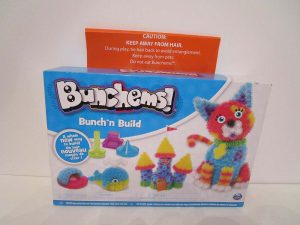
Photos: Worst Toys of 2019, W.A.T.C.H.
The Worst Toys of 2019 list has been released, providing parents and grandparents a preview of toys to avoid this holiday season. We urge you to read this list before you shop. Each toy mentioned has caused injury or has grave potential. We want Massachusetts families to steer clear and enjoy a safe and happy holiday season.
As you read, remember there are just 10 spaces on the Worst Toys list, which is compiled by W.A.T.C.H. – or World Against Toys Causing Harm, Inc. Yet there are far more toys out there which may be unsafe or inappropriate for your child’s age. Read our blog on the Worst Toys list, to help you identify common features in unsafe toys, such as small parts which could cause choking injuries.
Toy injuries are a daily risk for many families in Massachusetts, not just during the holidays. Across the country, 251,700 people suffered toy-related injuries in 2017. From 2015 to 2017, 37 children died while playing. These devastating numbers are preventable if manufacturers, distributors and retailers safely handle products throughout the supply chain. Parents can do their part by always reading and following age recommendation labels. Remember you also have help on this front. You can check the Consumer Product Safety Commission’s website for product warnings and recalls before you shop this holiday season, and throughout the year. You can also sign up for e-mail alerts.
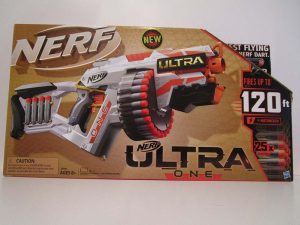 1- Nerf Ultra One
1- Nerf Ultra One
Though it looks like a blast, this Nerf toy is a $49.99 danger, W.A.T.C.H. says. The dart blaster shoots up to 120 feet and claims to be the “Farthest Flying Nerf Dart. Ever.” It carries an age recommendation of 8 and up, with several troubling warnings. W.A.T.C.H. reports the darts can be shot with enough force to cause eye injuries.
2 – Spike the Fine Motor Hedgehog
Spike is a risky toy because he comes with 12 removable quills, all 3 ½ inches long, W.A.TC.H. The problem is the packaging carries an age recommendation of 18+ months. This is deceptive, leading parents into conclude this is a safe toy for young children of that age. The age recommendation should be higher and carry a choking hazard label.
3 – Bumchems Bunch’N Build
These building toys stick together and make cute formations. What’s not cute is how they can get caught in your child’s hair. The manufacturer is clearly aware of this potential, advising parents to keep their child’s hair pulled back to avoid entanglement. Although they continue selling it, you don’t have to buy it. Carefully consider how your child and what could happen if you leave the room for a moment.
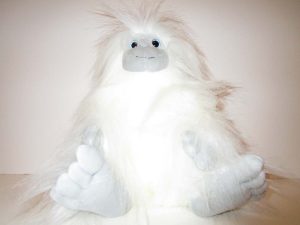 4 – YETI
4 – YETI
Pull at this doll’s white fur and with little effort, it becomes loose. Then it gathers, creating a choking hazard. The $21 toy is being sold everywhere this year, including Walmart.com, Target.com and Amazon.com. W.A.T.C.H. critically notes the toy has a recommendation of 24 months and up – on a removable sticker. Once this sticker comes off, consumers have to guess at the appropriate age.
Age recommendations are the most fundamental tool parents have in choosing safe toys. A removable label makes it hard to make safe choices, especially if you are handing the toy down between children.
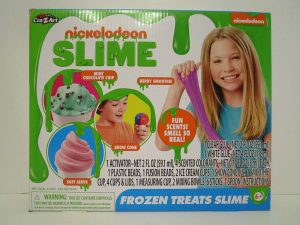
5- Nickelodeon Frozen Treats Slime
What can we say about this $9.99 slime toy? Or is it food? The truth is, it is a chemical which if ingested, can seriously harm your child. The confusing part is this slime really looks like a frozen treat on the box.
We urge you not to buy slime mixtures or any type of pretend food. There are plenty of other gift options. Traditional crafts such as drawing sets or even Play Doh are better choices. They don’t require any mixing of ingredients.
6 – Anstoy Electronic Toy Gun
W.A.T.C.H. is always critical of marketing realistic toy guns to children and has highlighted the practice over many years. This year it says the Anstoy electronic gun is being unsafely marketed for children age 14+ and can be found online by anyone with an Amazon account. We agree: steer clear of guns and choose toys which involve sports. A soccer ball, basketball or a new snowsled sound like great gifts to us!
7 – Diecast School Bus
This miniature school bus is a choking hazard because the small rubber tires can become loose. They are mounted on plastic wheels and can be pulled apart. So many toys have similar hazards and should be kept out of homes with younger children.
8 – Pogo Trick Board
This toy is a “high bounce ball” with dual handles for “tricking out.” The age recommendation is children 6 and up. The manufacturer warns children to wear a helmet to protect against head injuries. But the packaging shows two children using the board without a helmet. There is one child bouncing high while wearing a helmet, but overall, there’s not a strong advisory to parents.
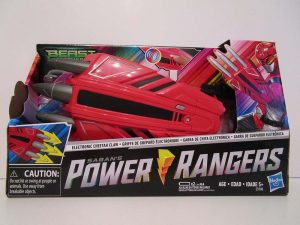 9 – Power Rangers Electronic Cheetah Claw
9 – Power Rangers Electronic Cheetah Claw
“Do not hit or swing at people or animals.” “Use away from breakable objects.” Finally, this toy carries a small parts warning, even though the age recommendation is 5+.
With so many warnings, why would you want to buy this toy? It may look cool to your child, but you have to remember it’s winter in Massachusetts. This is not a toy you want your child swinging around your home. Hasbro, the manufacturer, says the toy can cause potential eye or facial injuries.
10 – Viga Pull Along Caterpillar
This is an adorable toy, but it made the W.A.T.C.H. list because of its long string. This could cause a potential choking or strangulation hazard. The Viga Pull Along Caterpillar is a pull toy and should have a warning to go with its 24-inch cord.
Read more from the Worst Toys of 2019 on the W.A.T.C.H. website.
About Breakstone, White & Gluck – Free Consultation
Boston Product Liability Lawyers – Boston Defective Toy Lawyers
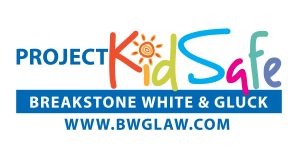 Breakstone, White & Gluck is experienced in representing those injured in Massachusetts in cases involving product liability and defective products. Manufacturers have a responsibility to conduct safety testing and properly label toys with age recommendations. When they neglect this responsibility, toys are not safe to use.
Breakstone, White & Gluck is experienced in representing those injured in Massachusetts in cases involving product liability and defective products. Manufacturers have a responsibility to conduct safety testing and properly label toys with age recommendations. When they neglect this responsibility, toys are not safe to use.
We share this blog as part of our holiday toy safety series and our Project KidSafe campaign. Learn more about Breakstone, White & Gluck and our work for clients on our website.
Take Caution Buying Children Digital Toys, Tablets and Apps
 Many children are asking for tablets, video games and digital toys this holiday season. Before you buy, really learn what you are introducing – and our suggestion is consider waiting. This year, companies such as Google were pressured to change their data collection practices. In 2020, we may just see some change from other companies, too. Read More
Many children are asking for tablets, video games and digital toys this holiday season. Before you buy, really learn what you are introducing – and our suggestion is consider waiting. This year, companies such as Google were pressured to change their data collection practices. In 2020, we may just see some change from other companies, too. Read More
Buying Your Child a New Bike, Scooter or Snowboard This Holiday? Don’t Forget the Safety Helmet

Give the gift of safety. Always give a helmets to go with new bicycles, scooters and other riding toys.
It is a lot of fun to select a new bicycle or scooter for a child during the holiday season. But when you buy, remember to pick up a new helmet, too. This is a critical tool in protecting against head injuries and under Massachusetts law, children 16 and younger are required to wear helmets on bicycles, scooters, skateboards and inline skates.
Massachusetts Bicycle Helmet Law: Children 16 and younger are required to wear bicycle helmets when they ride bikes in Massachusetts, under M.G.L. c. 85, § 11B.
Massachusetts Scooter Helmet Law. M.G.L. c. 85, § 11B1/2 states children 16 and younger must also wear safety helmets on scooters, skateboards and inline skates, as well as other manually-propelled wheeled vehicles.
Helmet Buying Tips: Spotlight on Bike Helmets
Buy a bicycle helmet which meets the safety standards set by the U.S. Consumer Product Safety Commission (16 C.F.R. part 1203). This standard is specifically designed to protect a child’s head with shock-absorbent material in bicycle accidents or falls. It requires chin traps be strong enough to keep the helmet in position on the head.
Buy a helmet separately from your bike. You may find it helpful to buy a helmet separately. To get started, measure around your child’s head with a cloth tape measure. Measure just above your child’s eyebrows. Start looking now online or visit your local bicycle shop.
Stick to traditional bike helmets. The CPSC discourages parents from buying helmets with decorative and costume pieces, such as horns or parts which protrude from the helmet. These will interfere with the helmet’s ability to protect a child’s head should they ever hit the ground.
How long has your child been wearing that helmet? If your child has been wearing a helmet for three years, this is a good time to buy a new one. But depending on your child’s growth and wear and tear, you may want to replace it sooner. Carefully inspect the helmet on the inside and outside.
Buy an adjustable helmet. Because children grow fast, we suggest an adjustable helmet which can be tightened or loosened in the back.
Helmets Designed for Other Activities
Safety helmets are designed for certain purposes. Each sport and activity involves a different impact.
But bicycle helmets can often be used for recreational in-line skating, roller skating or manual kick scooters, according to the Consumer Product Safety Commission’s (CPSC) helmet guidelines. Check these guidelines whenever you buy a helmet.
Talk to your child’s sports coach about helmet guidelines for football, hockey, lacrosse and baseball.
Get your helmets ready for the winter. Helmets are recommended for skiing, snowmobiling, snowboarding and snow tubing. Many skiers say helmets interfere with their peripheral vision and response time. If this is your thought, consider reading this New York Times blog on just how much protection they can provide.
Before we close, another point is there are times when children should definitely NOT WEAR HELMETS, including at the playground or when playing at home. Helmets and straps can get caught and strangle a child on staircases and step ladders.
CPSC Guide – “What Helmet for Which Activity”
Helmets are essential to protecting your child. Here is the CPSC’s Guide, “Which Helmet for Which Activity.” This guide provides you with recommended safety standard guidelines for different activities, so it’s definitely worth bookmarking. Another helpful site is the CSPC recalls website, which you can search for product recalls before you make a purchase.
About Breakstone, White & Gluck
Boston Personal Injury Lawyers – Toy Safety Lawyers
 At Breakstone, White & Gluck, our lawyers are consistently recognized for their awards for clients in personal injury, medical malpractice and product liability cases. Through our Project KidSafe campaign, we work to promote bicycle safety and the well-being of children in Massachusetts. To date, we have donated over 25,000 bicycle helmets to children across the state.
At Breakstone, White & Gluck, our lawyers are consistently recognized for their awards for clients in personal injury, medical malpractice and product liability cases. Through our Project KidSafe campaign, we work to promote bicycle safety and the well-being of children in Massachusetts. To date, we have donated over 25,000 bicycle helmets to children across the state.
If you are shopping for a child, we invite you to read more of our holiday toy safety series.
Holiday Toy Safety: Check for Age Recommendations and Choking Hazard Labels
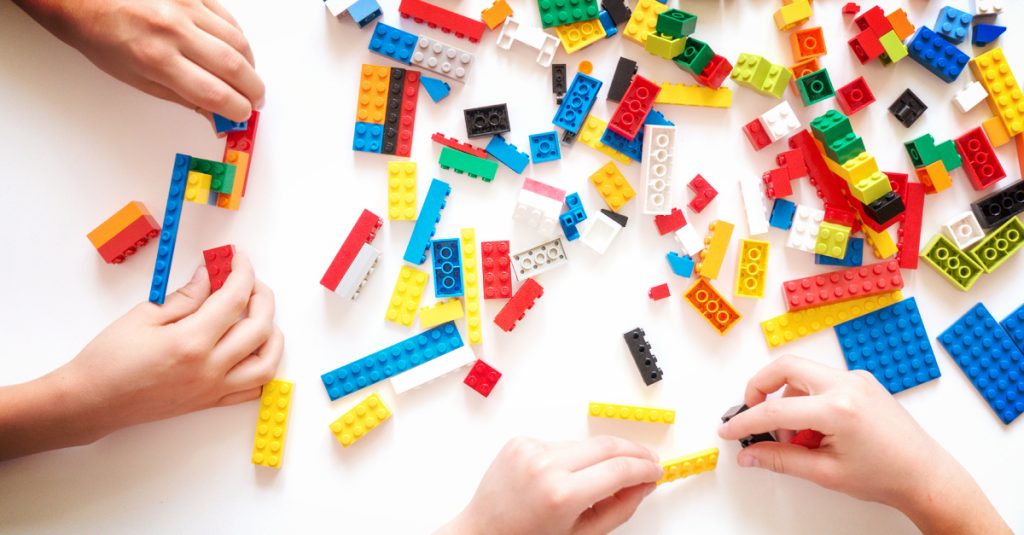 Age recommendation labels are the first tool you have in selecting safe holiday toys. Anyone purchasing toys for young children wants to familiarize themselves with the choking hazard-small parts label.
Age recommendation labels are the first tool you have in selecting safe holiday toys. Anyone purchasing toys for young children wants to familiarize themselves with the choking hazard-small parts label.
Warning: Choking Hazard – Small Parts. Not for Children Under 3 Years
Each year, children suffer choking injuries and deaths after consuming food or putting small objects in their mouths. In the late 1970s, the Consumer Product Safety Commission (CPSC) led a three-month study of an estimated 3,800 injuries involving children under age 10. It was determined that children under age 3 suffered more than half of all these injuries. More than 50 children under 3 died in accidents involving small parts.
With those numbers, the CPSC announced the small parts regulation, which became effective on January 1, 1980. Since then, toy manufacturers have been required to test toys and parts using the small parts cylinder test.
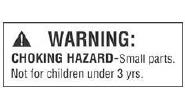
This cylinder has a diameter of 1.25 inches. The bottom of the cylinder is slanted, opening 1 to 2.25 inches. Toys which fall through the cylinder must carry the choking hazard – small parts warning and state not for children under 3 years old. Toys may also require labels if they fit through the tube, but break it during subsequent “use and abuse” testing (Source: U.S. PIRG, Trouble in Toyland 2018).
Toys which are too large can be sold without the choking hazard label, though they may require another type of labeling.
Small Parts Warning for Children Between Ages 3 and 6 Years
Any small part intended for children between age 3 and 6 must carry the same labeling: “Warning: Choking Hazard — This toy is a small part. Not for children under 3 years.”
Small Parts Warning – Small Balls
There is a separate federal standard for small balls, according to U.S. PIRG. Balls with a diameter of 1.75 inches are banned for children younger than 3 years of age.
Small balls must carry this age-recommendation label: “Warning: Choking Hazard — This toy is a small ball. Not for children under 3 years.” A similar label is required for toys which contain small balls: “Warning: Choking Hazard–Toy contains a small ball. Not for children under 3 years.”
Toymakers are required to test and use age recommendation labels. All toys intended for children age 12 and younger must undergo third-party testing and meet the most recent version of the federal safety standard, ATSM F963.
But there are times when parents and anyone buying a toy should be skeptical. Toymakers have made errors in labeling and there can be miscommunication between manufacturers and retailers when toys are displayed without packaging. Online product descriptions may not be accurate.
Remember These Toys Have Small Parts!
- Marbles
- Magnets
- Game pieces (such as the Monopoly characters)
- Legos and building bricks
- Small puzzle pieces (and cardboard pieces are a danger because small children can chew them and choke)
- Button batteries
- The clothing and parts on stuffed animals and dolls
- Pens and pencils with caps which can become loose
Additional Toy Safety Standards for Children Age 3 and Younger
While we are talking about small parts, we also want to remind parents of other federal toy safety guidelines for children under 3.
- Toys and children’s products must not have sharp points or edges which can potentially injure children.
- Paints and surface coating cannot contain more than .06 percent lead or other hazardous materials.
- Children’s pajamas, clothing and products which fail to meet flammability limits.
The best way to stay informed is to check the CPSC website for toy safety recalls and product warnings.
Final Points on Toy Safety for Young Children
Carefully inspect all toy sets and stuffed animals before and after purchase. Open boxes, handle the pieces yourself before giving. If you buy online, check if the box matches the online product description. Because of the demand for toys near the holidays, it’s not unusual for shoppers to receive a toy similar to what they ordered.Decide whether the toy will be safe near your child and their siblings. You should always consider younger siblings when buying gifts. If they are not at least 3 or older, wait another year. Also pause if the younger sibling just isn’t ready.
If your children are the right age and ready, purchase a secure container to keep the small parts in. Keep this container separate from other toys in your home and be mindful of not letting small pieces scatter.
Finally, supervise children whenever they play with small parts. Even older children can find themselves in dangerous situations at times when handling small pieces. This is especially true with new toys. So as they play, sit with them at the table or just stay in the room so you can help.
About Breakstone, White & Gluck – Boston Toy Safety Lawyers
 Our Boston personal injury lawyers represent clients in all personal injury matters, including motor vehicle accidents, medical malpractice, premises liability, wrongful death and cases involving injuries caused by defective products and unsafe toys. We share our holiday toy safety series as part of our Project KidSafe campaign.
Our Boston personal injury lawyers represent clients in all personal injury matters, including motor vehicle accidents, medical malpractice, premises liability, wrongful death and cases involving injuries caused by defective products and unsafe toys. We share our holiday toy safety series as part of our Project KidSafe campaign.
To learn more, visit our toy safety page. You can also visit our website to learn more about our attorneys and their experience.
Keep Magnet Toys Off Your Holiday Shopping List
We urge parents to keep magnet toys off your holiday shopping list for young children. High-powered “rare-earth” desk magnet toys are highly dangerous and there are many painful stories of children ingesting them, then fighting for their lives in surgery. But there are also other types of magnet toys, including magnet tile building sets and magnet construction toys. While these are very popular, this doesn’t mean they are safe for your family. Take time to do your research, read age recommendations and really consider your children’s needs.
Magnet Desk Toys or Cluster Magnet Toys
Read by product type:
Magnet Desk Toys or Cluster Magnet Toys
Tile Magnet Toys
Magnetic Construction Sets
Final Word on Safety
Magnet Desk Toys or Cluster Magnet Toys

Cross desktop magnet sets off your holiday shopping list. These have caused hundreds of children injuries.
The Consumer Product Safety Commission (CPSC) has worked to take desktop magnet toys off the market to prevent injuries to children. The problem is the average set has 125 or 216 strong magnet balls, though some have more than 1,000 pieces. The magnets are tiny and are extremely high-powered.
These magnet sets come apart and can be reassembled into unique shapes. In a child’s hands, the magnet clusters may become a necklace, triangle or whatever formation they imagine. When magnets are put in a child’s mouth, they can attract to each other, causing serious injuries in the digestive system as well as blood poisoning. Children usually require surgery for the intense pain.
New Magnet Safety Standard. Prior to 2014, “rare-earth” magnet sets were required to carry age recommendation labeling of 14 and older. In 2014, the CPSC established a federal toy safety standard which required magnets to be large enough to exceed the CPSC’s “small part” standard for toys or that magnetic parts have a force of attraction of 50 kG² mm² or less, according to the CPSC’s Final Rule: Safety Standards for Magnet Sets. The CPSC safety standard effectively made it illegal to sell “rare-earth” magnet sets in the U.S. and there was a positive response, an 80 percent reduction in magnet-ingested injuries, according to The Journal of Pediatrics.
You may guess young children are at the highest risk. But children age 4 through 12 suffered the most injuries in the CPSC’s analysis of ER visits over 5 years, from 2009 to 2013. According to the Federal Register dated October 3, 2014, the agency concluded an estimated 2,900 children had suffered magnet ingestion injuries. Children age 4 through 12 suffered 1,900 injuries – or 65 percent.
Tile Magnet Toys
For all this work, in 2016, the 10th Circuit of Appeals ruled the CPSC’s pre-requisite factual findings were “incomplete and inadequately explained.” The Court vacated the safety standard and remanded it back to the CPSC for further proceedings.
The lawsuit had been filed by Zen Magnets, one of the “rare-earth” magnet makers. The company is now selling its products again, under the Buckyballs and Mandala names, according to Tech Crunch. Again, we stress, please don’t buy these toys, especially if you have children or a pet. The parts are small and scatter easily. If you don’t find our blog compelling, we encourage you to read this article in STAT, called “Toy magnets are harming kids again. They need to be banned – for good,” August 6, 2019.
Tile Magnet Toys
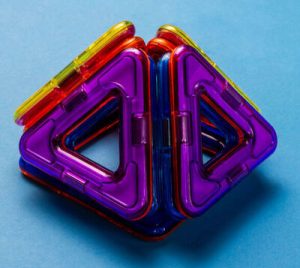
Magnet tile toys
These are magnets encased in plastic triangle and square shapes. These are popular, marketed as toys that help stimulate learning and imagination. Some of these are designed for children under age 3, some for children ages 3 and up; others are for age 6 and up. If you do purchase one of these sets, carefully check the age recommendation and secure it in a container out of reach of children.
There has been at least one case of the encasements opening and a child swallowing magnets. Last December, a Wisconsin mother shared her frightening story on social media and the Today Show reported on it. The woman’s 4-year-old son had swallowed 13 magnets from one of the tile magnet kits. After he began vomiting, she rushed him to a local hospital where surgeons had to remove part of his colon, intestine and appendix. The product manufacturer was not identified in the story.
The CPSC regularly issues recalls about toys containing small magnet parts. One of the largest recalls involving tile magnet building toys came in 2006, when Mega Brands America, Inc. recalled 4 million Magnetix Magnetic Building Sets. The recall was first announced on March 31, 2006 and re-issued and expanded in April 2007. The CPSC reported one child had died and one child had suffered aspiration. 27 others had suffered intestinal injuries, according to the CPSC news release.
The tragedy could have claimed even more lives; there had been 1,500 reports of magnets coming apart. Although the Magnetix Magnetic Building Sets were labeled age 6 and older, at least 10 injuries involved older children, up to age 11.
Magnetic Construction Sets
According to CBS News, in October of 2006, Mega Brands America settled a lawsuit with 15 victims for $13.5 million.
In 2009, consumers learned there was further wrongdoing in this case. On April 14, the CPSC announced that Mega Brands America, Inc. had agreed to pay a $1.1 million civil penalty to settle allegations that the company (and Rose Art Industries, which it had acquired) had failed to provide timely information about product dangers to children.
Magnetic Construction Sets
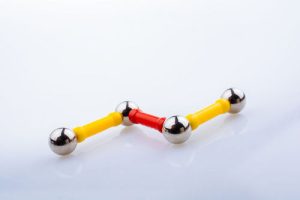
Magnet construction sets typically have magnets snap together with other stick pieces.
These sets include plastic rods and balls which can be snapped together with the magnet attraction.
Final Word on Safety
One problem is Consumer Reports found a full range of age recommendations across several popular products – and manufacturers unwilling to answer questions. Since age recommendations are the most fundamental tool consumers have, we recommend steering clear of these.
Final Word on Safety
The CPCS is responsible for overseeing product recalls and a quick search of its database can glean valuable information for parents. Visit www.cpsc.gov and search by product name or type of products. You can also visit the CPSC’s magnet information center.
With magnet toys, product regulations and age recommendations continue to change. They are very challenging to bring into any home safely, but especially homes with children of various ages and development skills and pets. In the end, you must make your own decision, but we urge you to be overly cautious and purchase other toys. There are so many other toys out there which can provide your child with a safe and enjoyable experience.
Breakstone, White & Gluck – Boston Toy Safety Lawyers
Breakstone, White & Gluck is a Boston law firm specializing in personal injury, medical malpractice and product liability. We wish Massachusetts families a safe and healthy holiday season and share our toy safety tips as part of our Project KidSafe campaign.
If you have been injured, contact Breakstone, White & Gluck to learn your legal rights at 800-379- or 617-723-7676. You can also use our contact form.


